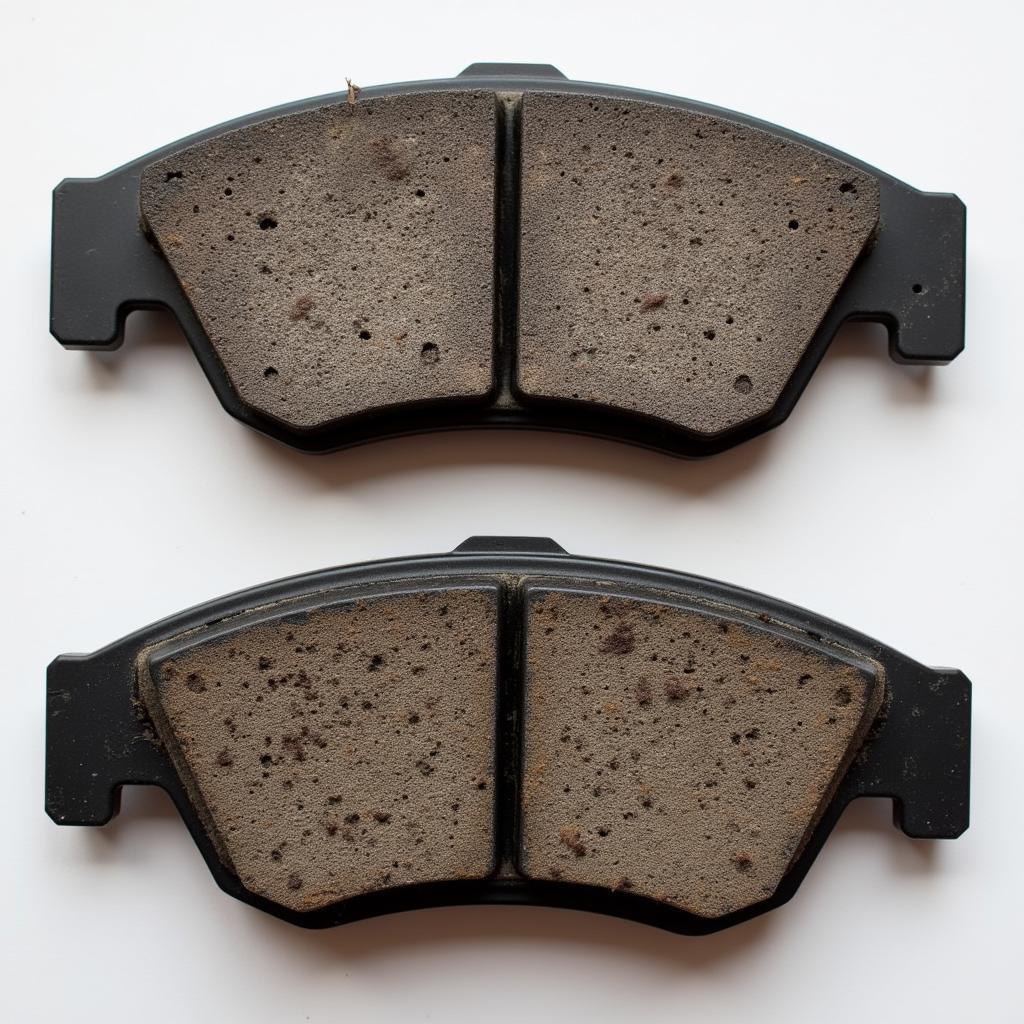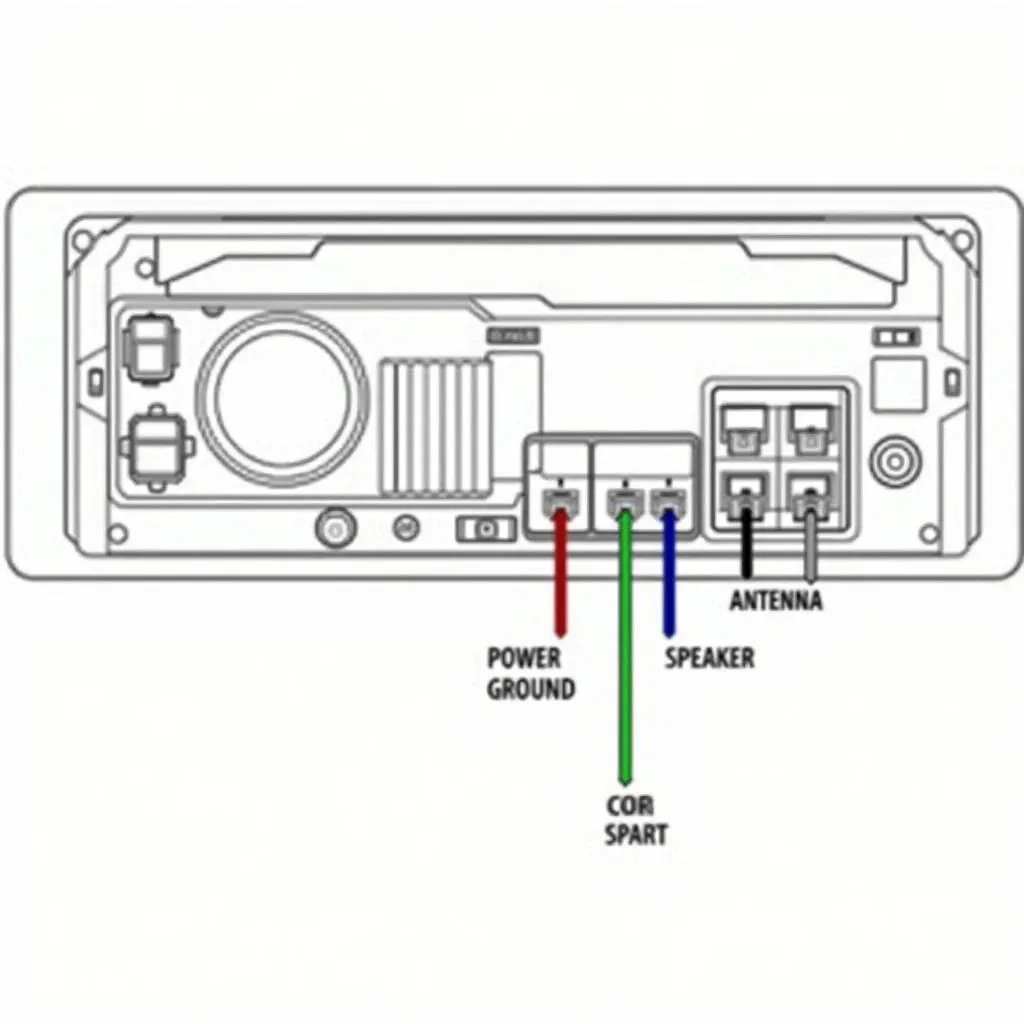The brake warning light on your Saab 9-5 is a crucial safety feature, illuminating on your dashboard to signal potential issues within your braking system. Ignoring this warning could lead to reduced braking efficiency and potentially dangerous driving situations. This article will explore the common causes behind a Saab 9-5 brake warning light and provide insights on how to diagnose and address them, ensuring you get back on the road safely.
Understanding Your Saab 9-5 Brake System
Before delving into specific causes, it’s helpful to understand the basic components of your Saab 9-5’s braking system. This system utilizes hydraulic pressure to force brake pads against rotors, generating the friction needed to slow or stop your vehicle. Key components include:
- Brake Fluid: A hydraulic fluid responsible for transmitting force within the braking system.
- Master Cylinder: A component that converts pedal pressure into hydraulic pressure.
- Brake Lines and Hoses: These carry brake fluid from the master cylinder to the brakes at each wheel.
- Calipers: Housing the brake pads, calipers squeeze the pads against the rotors when you apply the brakes.
- Rotors (or Discs): Metal discs attached to the wheels, providing the surface against which the brake pads clamp.
Common Causes of a Saab 9-5 Brake Warning Light
The illumination of your brake warning light can stem from various factors, ranging from minor issues to more significant problems. Here are some of the most frequent culprits:
1. Low Brake Fluid Level
Perhaps the most common reason for a brake warning light, low brake fluid often signals a leak in the system. Brake fluid is essential for transmitting hydraulic pressure, and a leak can significantly compromise braking performance.
How to Check:
- Locate the brake fluid reservoir under the hood of your Saab 9-5.
- Check the fluid level against the “MIN” and “MAX” markings on the reservoir.
- If the level is below the “MIN” mark, add the appropriate brake fluid type recommended in your owner’s manual.
Important: If you need to add brake fluid frequently, it indicates a leak. Have your braking system inspected by a professional mechanic immediately.
2. Worn Brake Pads
Brake pads are designed to wear down over time. As they thin, the brake warning light serves as a reminder to replace them. Driving with excessively worn pads can damage rotors and compromise braking effectiveness.
How to Check:
- Inspect your brake pads visually by looking through the spaces between the wheel spokes.
- Look for a thin metal indicator tab on the brake pad. If this tab is touching the rotor, it’s time to replace the pads.
Tip: If you’re unsure about the condition of your brake pads, consult a qualified mechanic for an inspection.
 Worn Brake Pads on a Saab 9-5
Worn Brake Pads on a Saab 9-5
3. Faulty Brake Pad Sensor
Some Saab 9-5 models are equipped with brake pad wear sensors. These sensors are designed to trigger the brake warning light when the brake pads reach a certain wear limit. A faulty sensor may illuminate the light prematurely or fail to activate when needed.
How to Check:
- Visually inspect the brake pad wear sensors, typically thin wires running to the brake pads.
- Look for any signs of damage, such as cuts or fraying.
Note: If you suspect a faulty sensor, it’s advisable to have it checked and replaced by a professional.
4. Issues with the ABS System
The Anti-lock Braking System (ABS) is a crucial safety feature that prevents wheel lockup during hard braking, enhancing vehicle control. A malfunctioning ABS module or sensor can trigger the brake warning light.
How to Diagnose:
- Pay attention to unusual noises or vibrations during braking, especially pulsating sensations in the brake pedal.
- If you experience these symptoms, it’s crucial to have your ABS system inspected by a qualified technician who can retrieve diagnostic trouble codes (DTCs) from the ABS module.
5. Other Potential Causes
While less common, other issues that can trigger the brake warning light in a Saab 9-5 include:
- Faulty brake caliper: A seized caliper can cause uneven braking and trigger the warning light.
- Air in the brake lines: Air in the brake lines can result in a spongy brake pedal feel and reduced braking efficiency.
- Malfunctioning brake light switch: The brake light switch activates your brake lights when you press the pedal. A faulty switch can disrupt the brake light circuit, potentially affecting the warning light as well.
When to Seek Professional Help
While some causes of a brake warning light, like low brake fluid, can be addressed relatively easily, others require specialized knowledge and tools.
“It’s always best to err on the side of caution when it comes to your brakes,” advises experienced Saab mechanic, Peter Johannson. “If you’re unsure about the cause of the warning light or uncomfortable troubleshooting yourself, it’s crucial to consult a qualified mechanic promptly.”
 Professional Saab 9-5 Brake Inspection
Professional Saab 9-5 Brake Inspection
Conclusion
The brake warning light on your Saab 9-5 plays a vital role in ensuring your safety on the road. By understanding the common causes behind its illumination and following the suggested diagnostic steps, you can take proactive measures to address the underlying issue. Remember, a properly functioning braking system is paramount for safe driving, and seeking professional help when needed is always the wisest course of action.

